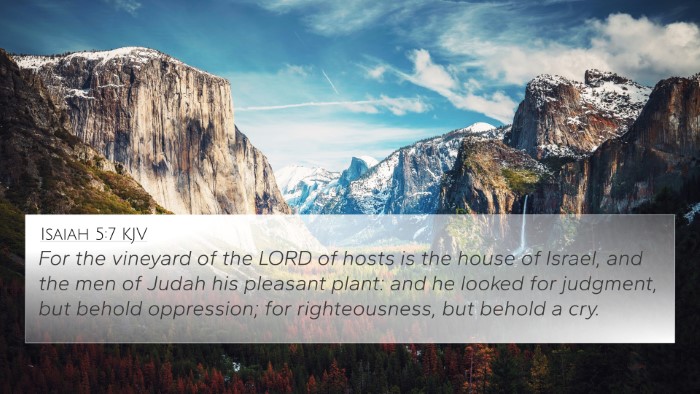Understanding Mark 11:13: A Comprehensive Analysis
Mark 11:13 states: "And seeing a fig tree afar off having leaves, he came, if haply he might find any thing thereon: and when he came to it, he found nothing but leaves; for the time of figs was not yet." This verse presents a profound lesson that extends beyond its immediate context, drawing connections and themes that resonate throughout Scripture.
Summary of Mark 11:13
This verse occurs during Jesus' journey toward Jerusalem, where he interacts with a fig tree that appears healthy and fruitful. However, upon closer inspection, it yields nothing but leaves, symbolizing unfulfilled potential. This incident serves as a parable within the narrative, revealing deeper theological implications concerning expectation, judgment, and spiritual fruitfulness.
Commentary Insights
Matthew Henry's Commentary
Matthew Henry highlights the significance of the fig tree as a metaphor for Israel. He interprets the tree's lack of fruit as symbolic of the nation’s spiritual condition: thriving outwardly but failing to bear genuine spiritual fruit. Henry notes that the “leaves” represent religious appearances that do not reflect true faith or obedience.
Albert Barnes' Notes on the Bible
Albert Barnes expands upon this by emphasizing Jesus' expectations of the fig tree because of its external appearance. He explains that the incident illustrates the disappointment that God experiences when His people fail to produce fruit, despite outward signs of life. Barnes proposes that this serves as a warning about hypocrisy and superficial faith.
Adam Clarke's Commentary
Adam Clarke discusses the timing of the fig tree’s fruit-bearing season. He notes that the appearance of leaves should indicate the presence of figs. Clarke suggests Jesus' act serves to teach Christians about being watchful and accountable in their spiritual lives, ensuring that they do not present an outer semblance of faith while lacking inner substance.
Thematic Connections
The message of Mark 11:13 resonates with various themes throughout the Bible, and cross-referencing reveals several significant scriptures:
- Matthew 21:18-19 - Another account of Jesus cursing the fig tree, reinforcing the importance of bearing fruit.
- Luke 13:6-9 - The parable of the barren fig tree speaks to the issue of fruitfulness and God's patience.
- John 15:1-2 - Jesus as the true vine emphasizes the necessity of abiding in Him to bear fruit.
- Romans 11:21-22 - The discussion of Israel's branches provides an analogous warning of judgment for lack of faith.
- James 2:17 - Faith without works is dead, parallel to the concept of mere outward appearance.
- Galatians 5:22-23 - The fruits of the Spirit contrast the barren fig tree, highlighting qualities expected from believers.
- Isaiah 5:1-7 - A song about God's vineyard describes the disappointment of unfruitful Israel, paralleling the themes in Mark 11:13.
Cross-Referencing Biblical Texts
Mark 11:13 invites believers to engage in a profound cross-referencing Bible study of related themes, such as:
- The Exhortation to Bear Fruit: Consistency in biblical teaching about spiritual fruitfulness is evident throughout both testaments.
- Hypocrisy in Worship: The tension between outward appearances versus inner truth challenges Christian integrity across scriptures.
- Judgment and Mercy: An overarching narrative of God's call for repentance and the gracious space He gives for fruit-bearing.
Tools for Bible Cross-Referencing
For those studying Bible verses that relate to each other, using a Bible concordance can greatly enhance understanding by revealing diverse connections. Here are methods to incorporate cross-referencing in personal study:
- Utilize a Bible cross-reference guide to identify related themes and verses quickly.
- Engage with cross-reference Bible study to recognize the narrative flow between different passages.
- Employ a Bible chain reference technique, linking verses together for deeper insight.
Conclusion
Mark 11:13 serves as a profound reminder for believers regarding the importance of spiritual authenticity and the expectation of bearing fruit in the Christian life. Through comparative analysis and thematic connections with other scriptures, we can gain a fuller understanding of its implications and the inter-Biblical dialogue that enriches biblical study. For further exploration, the reader is encouraged to delve into the cross-references presented and reflect on how they contribute to the overarching narrative of faith, judgment, and divine expectation.









